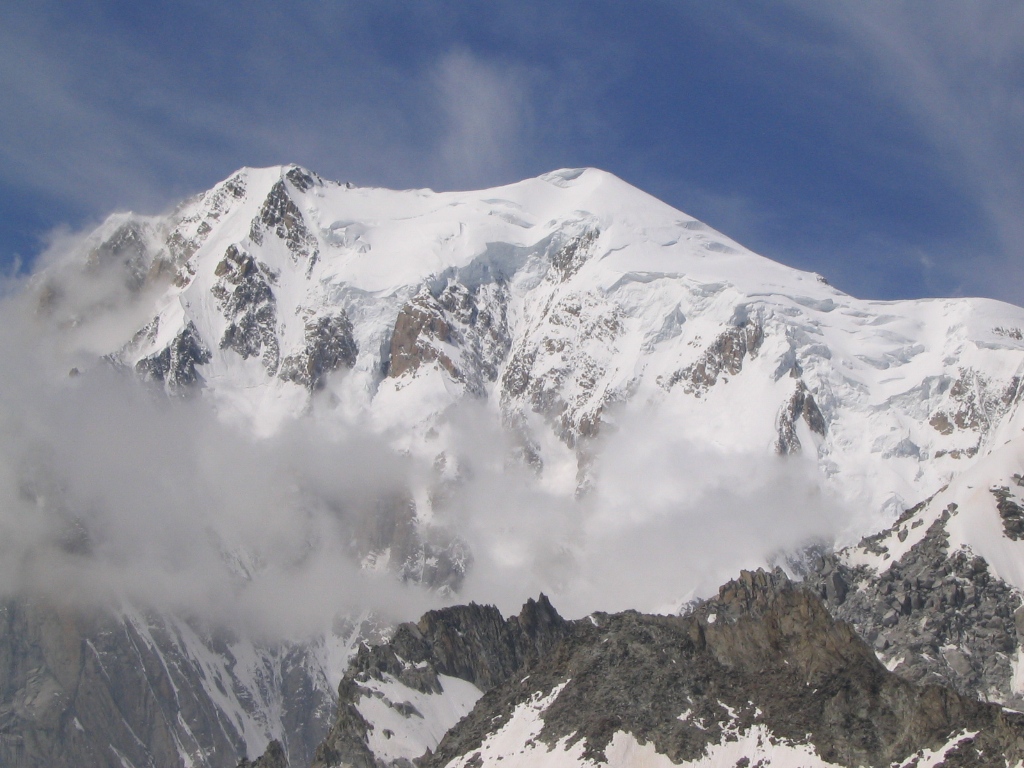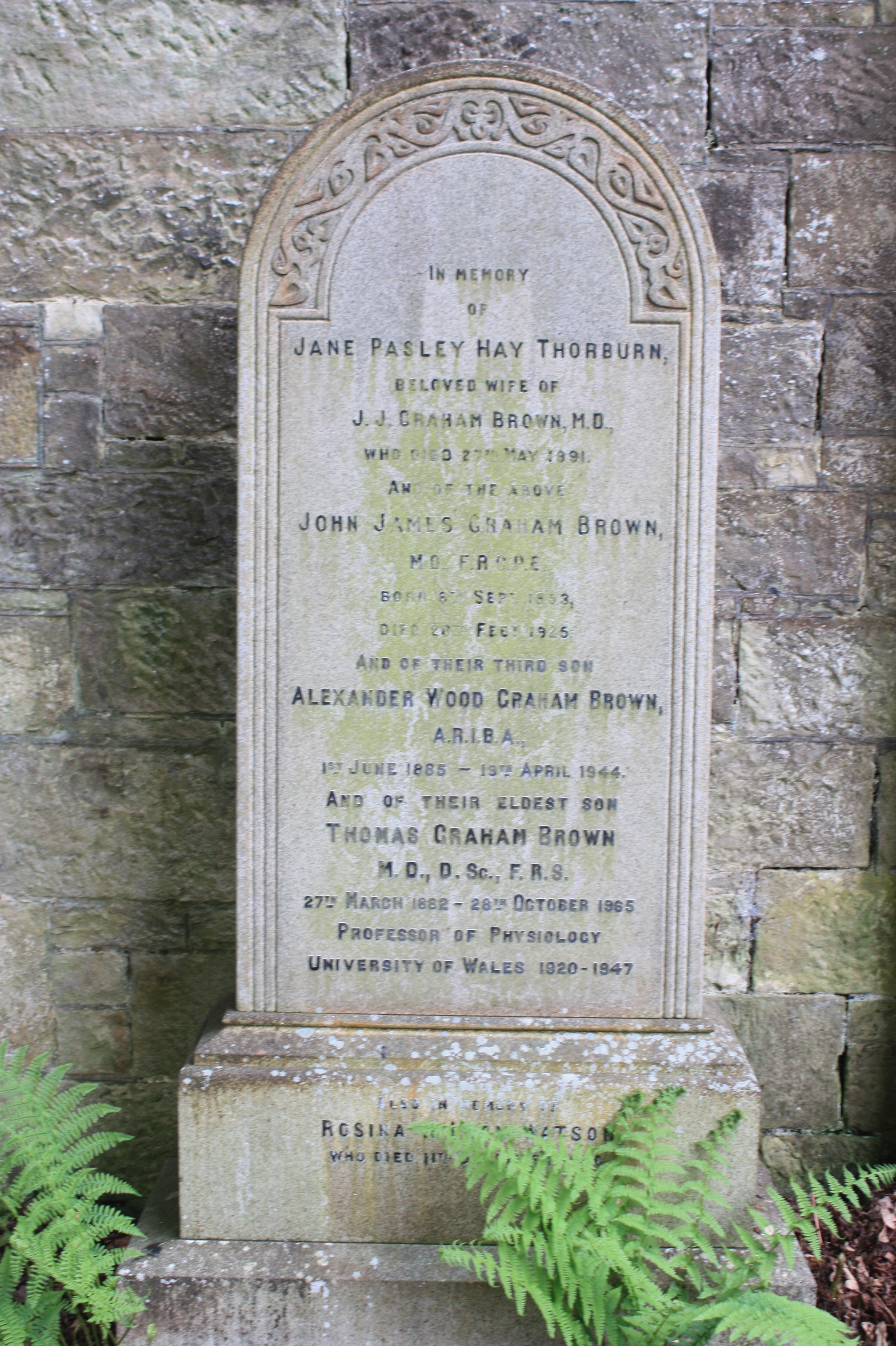Thomas Graham Brown on:
[Wikipedia]
[Google]
[Amazon]
Thomas Graham Brown FRS (usually known as T. Graham Brown; 27 March 1882 – 28 October 1965) was a Scottish
Retrieved 8 September 2008 and in 1920 he accepted the Chair in Physiology at the

Information about the current Graham Brown House at ed.ac.uk
Retrieved 6 October 2010
mountaineer
Mountaineering or alpinism, is a set of outdoor activities that involves ascending tall mountains. Mountaineering-related activities include traditional outdoor climbing, skiing, and traversing via ferratas. Indoor climbing, sport climbing, an ...
and physiologist
Physiology (; ) is the scientific study of functions and mechanisms in a living system. As a sub-discipline of biology, physiology focuses on how organisms, organ systems, individual organs, cells, and biomolecules carry out the chemical a ...
, most famous for finding three new routes up the east face of Mont Blanc
Mont Blanc (french: Mont Blanc ; it, Monte Bianco , both meaning "white mountain") is the highest mountain in the Alps and Western Europe, rising above sea level. It is the second-most prominent mountain in Europe, after Mount Elbrus, and i ...
.
Life and academic work
Graham Brown was born in Edinburgh on 27 March 1882. His father, Dr John Joseph Graham Brown was a President of theRoyal College of Physicians of Edinburgh
The Royal College of Physicians of Edinburgh (RCPE) is a medical royal college in Scotland. It is one of three organisations that sets the specialty training standards for physicians in the United Kingdom. It was established by Royal charter ...
from 1912 to 1914. His mother was Jane Pasley Hay Thorburn. The family lived at 63 Castle Street in Edinburgh's New Town
The New Town is a central area of Edinburgh, the capital of Scotland. It was built in stages between 1767 and around 1850, and retains much of its original neo-classical and Georgian period architecture. Its best known street is Princes Street ...
.
Thomas studied science and medicine at the University of Edinburgh
The University of Edinburgh ( sco, University o Edinburgh, gd, Oilthigh Dhùn Èideann; abbreviated as ''Edin.'' in post-nominals) is a public research university based in Edinburgh, Scotland. Granted a royal charter by King James VI in 15 ...
, gaining an MD in 1912 with a thesis on the rhythmic movement of decerebrate animals, followed in 1914 with a DSc from the same institution for a thesis on immediate and successive effects of compound stimulation in spinal preparations, before moving to Glasgow
Glasgow ( ; sco, Glesca or ; gd, Glaschu ) is the most populous city in Scotland and the fourth-most populous city in the United Kingdom, as well as being the 27th largest city by population in Europe. In 2020, it had an estimated popul ...
and Liverpool
Liverpool is a city and metropolitan borough in Merseyside, England. With a population of in 2019, it is the 10th largest English district by population and its metropolitan area is the fifth largest in the United Kingdom, with a popul ...
. Although his work was largely ignored for many years, he was the first to propose a half-centre model of motor neurons in which two groups of spinal neurons that are both reciprocally organized and mutually inhibiting are capable of producing basic rhythmic movement. His theory reflects today's widely accepted concept of central pattern generator
Central pattern generators (CPGs) are self-organizing biological neural circuits that produce rhythmic outputs in the absence of rhythmic input. They are the source of the tightly-coupled patterns of neural activity that drive rhythmic and stereot ...
s in motor neurons. However, at the time, his views opposed those of his mentor, Sir Charles Scott Sherrington, who believed that the locomotor movements observed in decerebrate animals were caused by a chain of reflexes initiated by proprioception
Proprioception ( ), also referred to as kinaesthesia (or kinesthesia), is the sense of self-movement, force, and body position. It is sometimes described as the "sixth sense".
Proprioception is mediated by proprioceptors, mechanosensory neurons ...
feedback. By contrast, Brown's research demonstrated that in the absence of cutaneous and proprioceptive signals, deafferented animals were still capable of generating alternating muscular rhythms. Unknown to him, his proprietary work was ahead of his time, only making waves in the field of motor control
Motor control is the regulation of movement in organisms that possess a nervous system. Motor control includes reflexes as well as directed movement.
To control movement, the nervous system must integrate multimodal sensory information (both f ...
fifty years after it was originally published, when Lundberg and Jankowska's study in the 1960s supported his half-centre model.
Brown went on to serve in the Royal Army Medical Corps
The Royal Army Medical Corps (RAMC) is a specialist corps in the British Army which provides medical services to all Army personnel and their families, in war and in peace. The RAMC, the Royal Army Veterinary Corps, the Royal Army Dental Corps a ...
during the First World War
World War I (28 July 1914 11 November 1918), often abbreviated as WWI, was one of the deadliest global conflicts in history. Belligerents included much of Europe, the Russian Empire, the United States, and the Ottoman Empire, with fightin ...
. After the war, he continued his work on the physiology of the nervous system, particularly reflex movements and posture,Obituary of Graham Brown at jstor.orgRetrieved 8 September 2008 and in 1920 he accepted the Chair in Physiology at the
University of Wales
The University of Wales (Welsh language, Welsh: ''Prifysgol Cymru'') is a confederal university based in Cardiff, Wales. Founded by royal charter in 1893 as a federal university with three constituent colleges – Aberystwyth, Bangor and Cardiff � ...
at Cardiff
Cardiff (; cy, Caerdydd ) is the capital and largest city of Wales. It forms a principal area, officially known as the City and County of Cardiff ( cy, Dinas a Sir Caerdydd, links=no), and the city is the eleventh-largest in the United Kingd ...
. In 1927 he was elected a Fellow of the Royal Society
Fellowship of the Royal Society (FRS, ForMemRS and HonFRS) is an award granted by the judges of the Royal Society of London to individuals who have made a "substantial contribution to the improvement of natural science, natural knowledge, incl ...
.
He died on 28 October 1965 and was buried with his parents on the hidden southern terrace of Dean Cemetery
The Dean Cemetery is a historically important Victorian cemetery north of the Dean Village, west of Edinburgh city centre, in Scotland. It lies between Queensferry Road and the Water of Leith, bounded on its east side by Dean Path and on ...
in western Edinburgh
Edinburgh ( ; gd, Dùn Èideann ) is the capital city of Scotland and one of its 32 Council areas of Scotland, council areas. Historically part of the county of Midlothian (interchangeably Edinburghshire before 1921), it is located in Lothian ...
.


Alpinism
The east or Brenva face ofMont Blanc
Mont Blanc (french: Mont Blanc ; it, Monte Bianco , both meaning "white mountain") is the highest mountain in the Alps and Western Europe, rising above sea level. It is the second-most prominent mountain in Europe, after Mount Elbrus, and i ...
was the scene of his most famous first ascents, his three new routes – the Sentinelle Rouge, Route Major and the Pear Buttress – constituting "the most important new routes made by British climbers in the Alps in the inter-war years." In an article in the ''Alpine Journal
The ''Alpine Journal'' (''AJ'') is an annual publication by the Alpine Club of London. It is the oldest mountaineering journal in the world.
History
The magazine was first published on 2 March 1863 by the publishing house of Longman in London, ...
'', Graham Brown wrote
He climbed the first of these routes, the Sentinelle Rouge, with Frank Smythe
Francis Sydney Smythe, better known as Frank Smythe or F. S. Smythe (6 July 1900 – 27 June 1949), was an English mountaineer, author, photographer and botanist. He is best remembered for his mountaineering in the Alps as well as in the Himal ...
on 1–2 September 1927.T. Graham Brown, ''Brenva'', J. M. Dent & Sons, London, 1944, p. 189 Smythe also accompanied him on the first ascent of Route Major on 6–7 August 1928. According to Claire Engel, "both expeditions were among the most notable of the century". The third route – the Pear Buttress – ascended the large rock buttress on the left of the face, and was made by Graham Brown, together with Alexander Graven and Alfred Aufdenblatten, on 5 August 1933.''Brenva'', p. 191
Graham Brown was the editor of the ''Alpine Journal'' from 1949 to 1953.
In 1935, Graham Brown made the first ascent of Alaska's 5304 m Mount Foraker
Mount is often used as part of the name of specific mountains, e.g. Mount Everest.
Mount or Mounts may also refer to:
Places
* Mount, Cornwall, a village in Warleggan parish, England
* Mount, Perranzabuloe, a hamlet in Perranzabuloe parish, C ...
in company with Charles Houston and Chychele Waterston.
In 1936, Graham Brown was part of the joint British–American team that made the first ascent of Nanda Devi
Nanda Devi is the second-highest mountain in India, after Kangchenjunga, and the highest located entirely within the country (Kangchenjunga is on the border of India and Nepal). It is the 23rd-highest peak in the world.
Nanda Devi was consid ...
in the Indian Himalaya, though only two of the party, Bill Tilman
Major Harold William Tilman, CBE, DSO, MC and Bar, (14 February 1898 – November 1977) was an English mountaineer and explorer, renowned for his Himalayan climbs and sailing voyages.
Early years and Africa
Bill Tilman was born on 14 Feb ...
and Noel Odell
Noel Ewart Odell FRSE FGS (25 December 1890 – 21 February 1987) was an English geologist and mountaineer. In 1924 he was an oxygen officer on the Everest expedition in which George Mallory and Andrew Irvine famously perished during their summit ...
, made the summit.H. W. Tilman, ''The Ascent of Nanda Devi'', London: Hodder & Stoughton, 1936
Bequests
Graham Brown bequeathed his collection of alpine and mountaineering literature, consisting of some 20,000 items, to theNational Library of Scotland
The National Library of Scotland (NLS) ( gd, Leabharlann Nàiseanta na h-Alba, sco, Naitional Leebrar o Scotland) is the legal deposit library of Scotland and is one of the country's National Collections. As one of the largest libraries in the ...
. He left his house for the use of the Edinburgh University Mountaineering Club. The original house was sold by Edinburgh University as part of their sale of assets to meet debts in the 1990s. After protests by members of the time, the university named a flat in newly constructed student accommodation "Graham Brown House"; this flat is still used by the club.Retrieved 6 October 2010
References
{{DEFAULTSORT:Brown, T. Graham 1882 births 1965 deaths Scottish physiologists Scottish neuroscientists Fellows of the Royal Society Scottish mountain climbers British Army personnel of World War I Royal Army Medical Corps officers